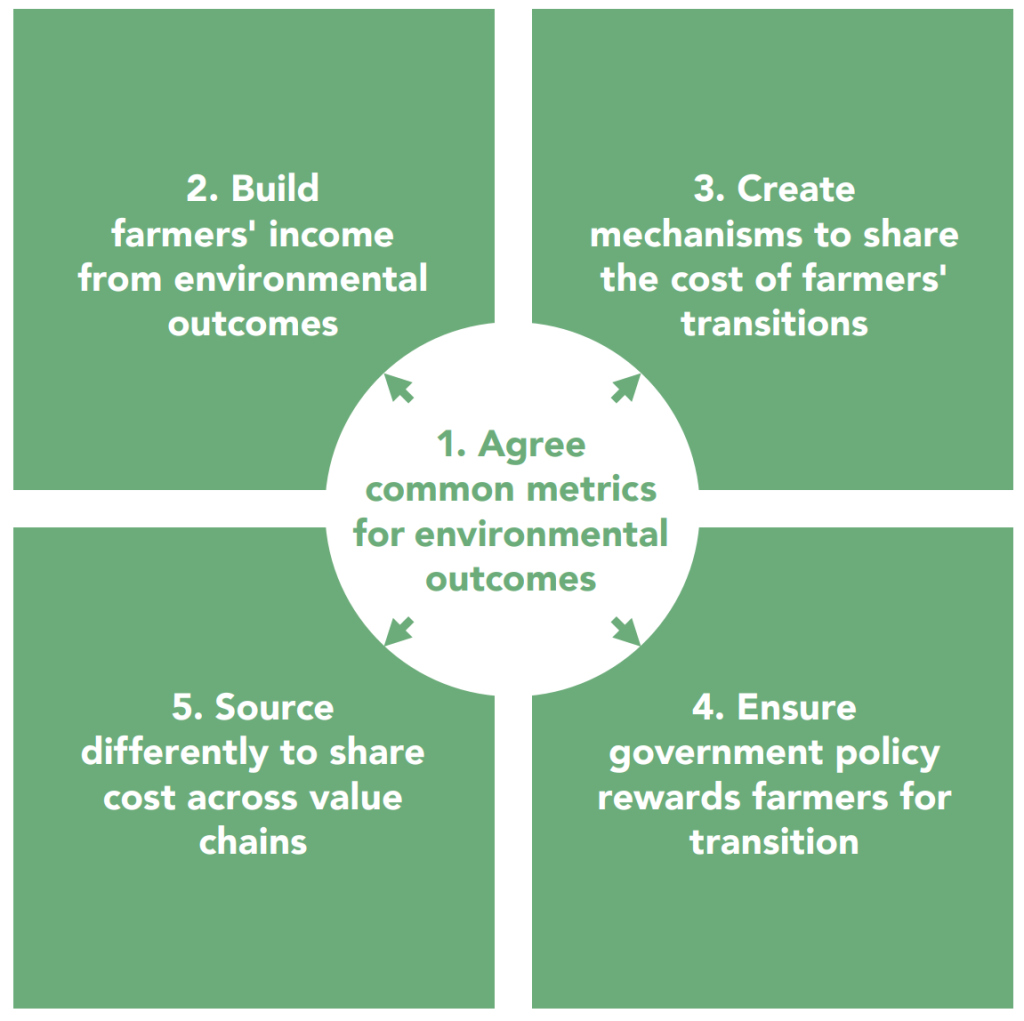Written by Belinda Clarke from Agri-Tech E
How can we scale regenerative farming? Following the COP27 discussions in Egypt, this month we look at mindset, money and markets, and how to harness them to influence a more regenerative approach to food production. A recent report from the Sustainable Markets Initiative (SMI) Task Force suggests a tripling of land under such a management approach is needed (up to around 40% of cropped land globally) to reach the climate goals by 2050 and mitigate the predicted 1.5°C rise in the Earth’s temperature.
How will farmers be rewarded for regenerative agriculture?

The Sustainable Markets Initiative Agribusiness Task Force report ‘Scaling Regenerative Farming: An action plan’ reveals three main reasons why regenerative approaches are not scaling:
- The short-term economic case is not compelling enough for the average farmer
- There is a knowledge gap in how to implement regenerative farming
- Drivers in the value chain aren’t aligned
The reasons why regenerative approaches are yet to be widely adopted are not rocket science – either the economic case is weak, there is a knowledge gap around implementation, or the drivers in the value chain are misaligned with the positive (sometimes costly) changes that farmers are making on the ground.
Co-authored by the CEOs of some of the major global agri-businesses (including retailers, processors and input suppliers), the SMI report identified a set of solutions needed to at least tackle the economic barrier to adoption – named “the Big 5” (detailed in the next article). These include:
- Agreement of common environmental metrics, around which additional income for farmers can be generated.
- Creating mechanisms to share the cost of farmers’ transition to regenerative agriculture
- Policy reform to reward farmers
- Sharing costs across the value chain.
It is this latter point which we’d like more detail on. Many governments are already incentivising a shift to more regenerative and sustainable solutions for farmers, and the common environmental metrics has a lot of people working on them in both the public and private sector (spoiler alert – but not quite there yet!).
Yet sharing costs across the value chain – and, crucially, being fair to farmers – is something that can and must be implemented as a matter of urgency.
At the recent World Agri-Tech Investment Forum, there was much talk of consumers not being willing to pay extra, and hence the farmers likely bearing the brunt of the transition at their own risk and cost.
Collaborative approach across the value chain
Improving collaboration (always an easy one to call for!) and a change in mindset (ditto!) are cited as ways of achieving this by the report authors, along with taking evidence-based methodologies to decisions and accepting ambiguity. There is also a call – not quite a commitment – to assign regenerative agriculture approaches across commercial and procurement teams in big corporates, not just within the sustainability teams.
The report also contains a call-to-arms of actions for different players across the value chain, from landowners, to farm advisors, retailers to input suppliers, and governments to the financial services industry.
So, everyone has the opportunity to contribute to the shift to regenerative agriculture.
But to paraphrase George Orwell’s Animal Farm, while all animals are equal, some are more equal than others. And while everyone has a part to play in the world embracing regenerative agriculture, it is clear that some have a greater part than others.
WHY REGENERATIVE FARMING IS NOT SCALING
Extract from the ‘Scaling Regenerative Farming: An action plan’ Click the link below to read the whole report.
The work showed that there are three main reasons why regenerative farming is not scaling:
- The short-term economic case is not compelling enough for the average farmer
- There is a knowledge gap in how to implement regenerative farming
- Drivers in the value chain aren’t aligned to encourage regenerative farming
WHAT WE CAN DO ABOUT IT: THE BIG FIVE
Addressing the economic case is the most important and also the most complex challenge. We believe there are five big things we need to work on collaboratively across the whole food system to solve this problem – the Big Five. Progress on the Big Five will take time and cooperation. In the meantime, there are a number of actions companies can take to make it more attractive for farmers to transition to regenerative agriculture. These are outlined in Part 2, where you’ll also find a guide to which actions your sector should progress and how.




